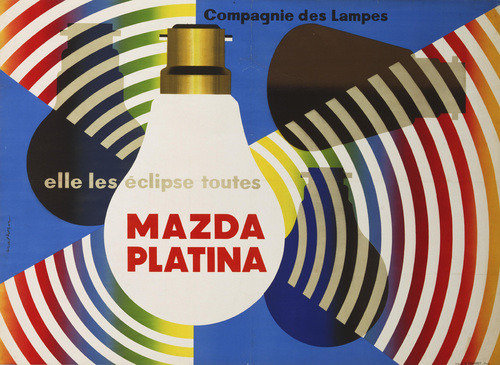Electric Currents, 1900-1940
dal 27/3/2012 al 29/9/2012
Segnalato da
27/3/2012
Electric Currents, 1900-1940
The Museum of Modern Art - MoMA, New York
This installation features a dozen posters from MoMA's collection used in this period to promote electricity, which offered staggering possibilities for progress but was not universally welcomed.

Electricity—a source of clean, efficient power and brilliant, reliable light—epitomized the very spirit of modernism in the early 20th century. After decades of research and competitive experimentation following the development of the first arc lamps and incandescent filament bulbs in the mid-19th century, electricity began to transform every aspect of modern life.
Electric light—first in city streets and then in homes—brought a revolutionary innovation to daily existence, literally redefining day and night. This installation features a dozen posters from MoMA’s collection used in this period to promote electricity, which offered staggering possibilities for progress but was not universally welcomed. In creating graphics for industry leaders like AEG and Bosch, modern designers were inspired by the beauty of the bulb itself and the splendor of electric light, which are both rendered with exquisite power in Jacques Nathan-Garamond’s poster of c. 1938, which pulsates in 2-D. The installation highlights a selection of Lester Beall’s equally vibrant posters for the Rural Electrification Administration, which used bold, patriotic graphics to foster public awareness of the benefits of electricity in America’s homes and farms during the Great Depression.
Image: Jacques Nathan-Garamond (French, b. 1910)
Elle les Éclipse Toutes, Mazda Platina. c. 1938. Lithograph
45 5/8 x 63" (115.8 x 160 cm).
The Museum of Modern Art, New York. Gift of the Designer, 1968
Press Contact: Kim Donica, 212/708-9752 or kim_donica@moma.org
Projects Gallery, second floor
The Museum of Modern Art, 11 West 53 Street, New York, NY 10019
Hours:
Wednesday through Monday, 10:30 a.m.–5:30 p.m. Friday, 10:30 a.m.–8:00 p.m. Closed Tuesday
Museum Admission:
$25 adults; $18 seniors, 65 years and over with I.D.; $14 full-time students with
current I.D. Free, members and children 16 and under. (Includes admittance to Museum galleries and film programs).
Target Free Friday Nights 4:00–8:00 p.m.



